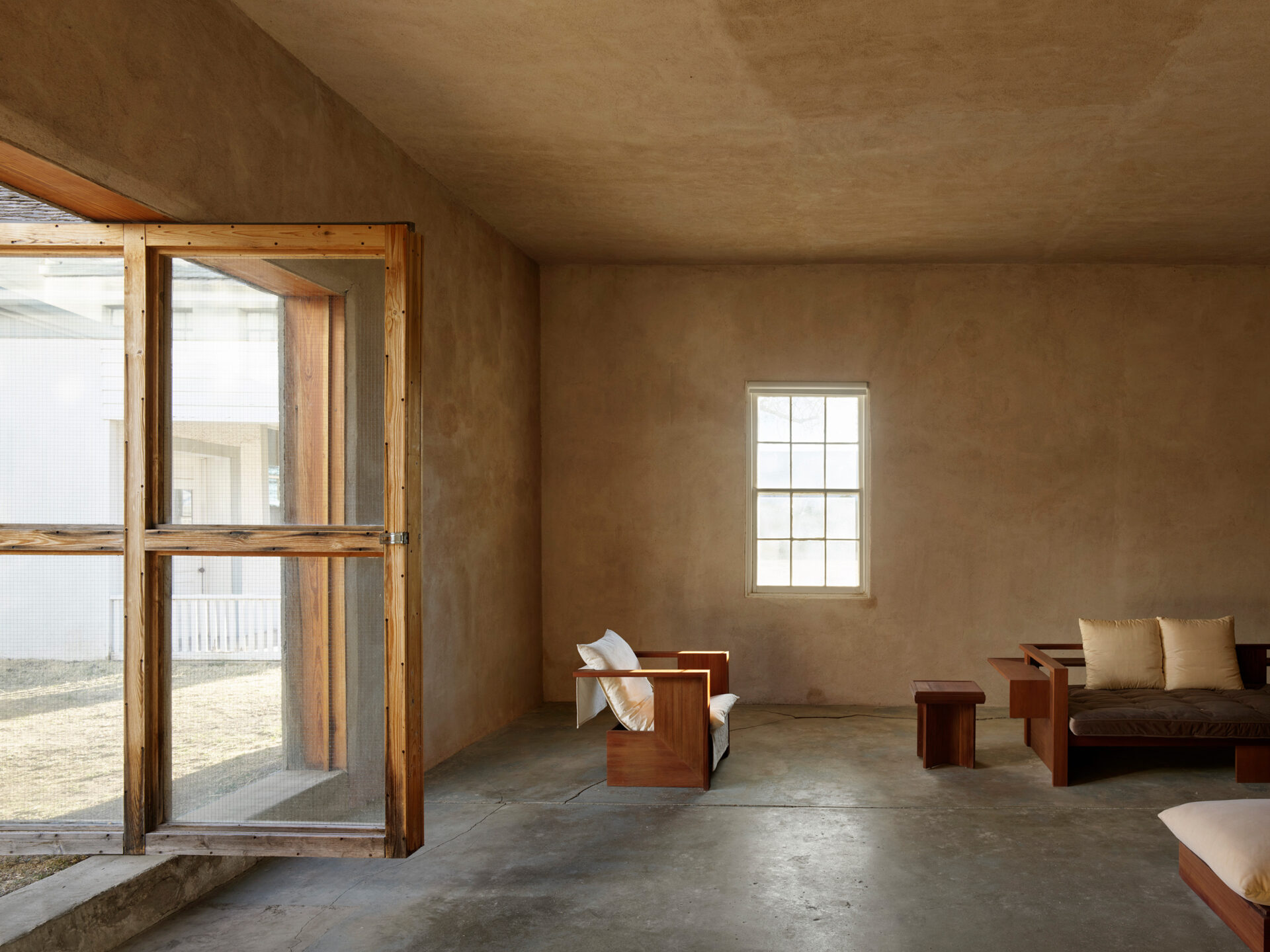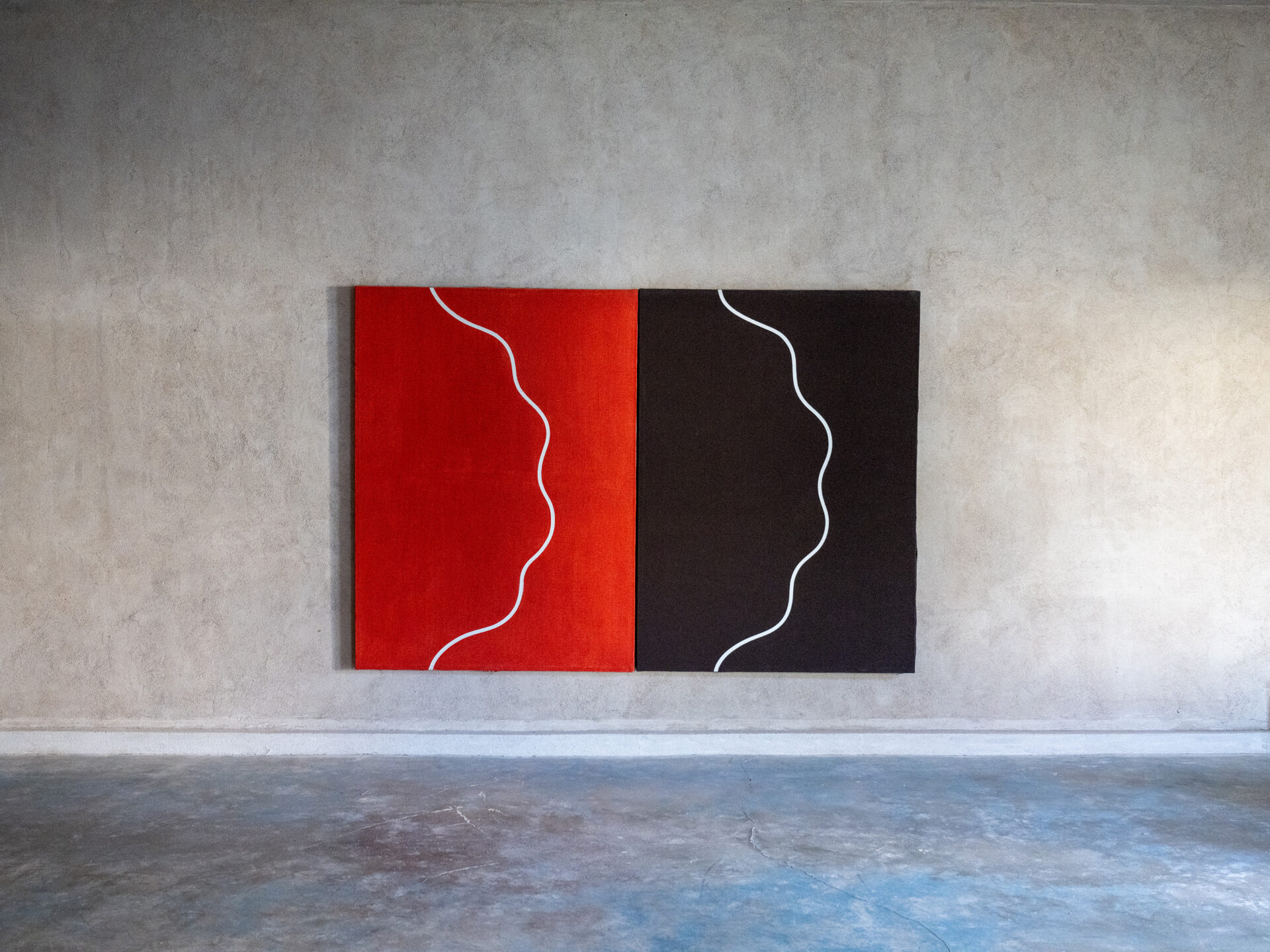



104 West Oak Street
Marfa, Texas
In 1989, Judd purchased three buildings along Oak Street on five and a half lots of property in downtown Marfa. Constructed in 1925 as a storage barn for the adjacent store, Winn’s Five and Dime, the Whyte Building was renovated by Judd beginning in 1990.
The structure was renovated by Judd for the installation of his paintings from 1960 to 1962 along with examples of furniture by architect and designer Rudolph Schindler. Selected by Judd specifically for the space, the furniture on view was made in 1991 by fabricator Robert Nicolais in Los Angeles, the only fabricator authorized by the Schindler family at that time. Judd refinished the interior walls with gypsum plaster, leaving the original concrete floors, and ran a band of stucco around the exterior adobe walls. The paintings installed illustrate a critical shift in Judd’s approach to painting in a remarkably short time from the late 1950s and early 1960s. These works reflect the period of time where Judd considered the painted line to be an incised void, creating what he referred to as inner space.
Judd began the construction of an exterior wall to encircle the Cobb House and Whyte Building along with an adjoining Gatehouse in 1990. In the open area to the back of the Cobb House stands the first unit of a five-part work in Cor-ten steel designed by Judd, never to be completed. Judd intended to outfit the complex with an additional building, the property has existed in its present state since the early 1990s.
The Cobb House, Whyte Building, and Gatehouse are contributing buildings to the Central Marfa Historic District listed on the National Register of Historic Places.
The Agave Garden is situated outside of the Cobb House, Whyte Building, and Gatehouse on West Oak Street. The garden features more than twenty agave plants native to the region selected to highlight their use by indigenous peoples of the region for food, beverage, fiber, and cultural ceremonies. The two benches installed in the garden were originally designed by Judd for the outdoor space at La Mansana de Chinati/The Block.

Audio excerpt of Bromberg Distinguished Lecturer presented in conjunction with the current exhibition of Donald Judd’s work at the Dallas Museum of Art, Dallas, Texas, February 23, 1989. Courtesy of the Dallas Museum of Art Archives.